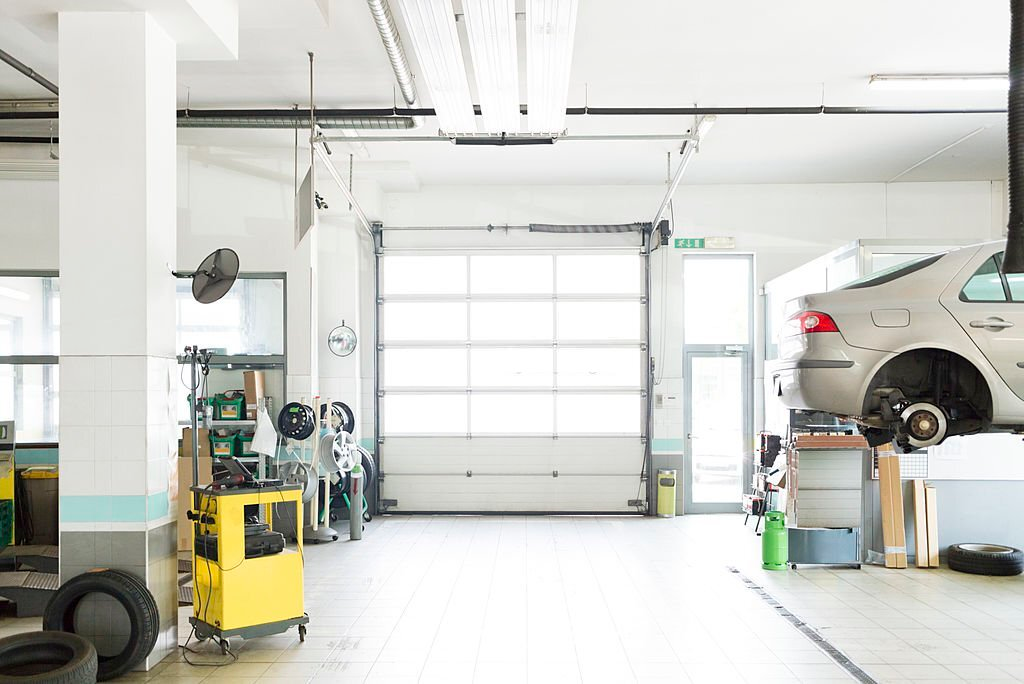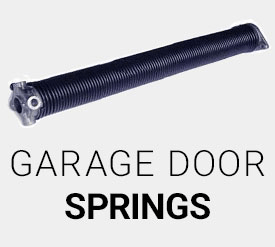Imagine on a snowy night, you drive to your house, press the button on your garage door control, and the garage door opener immediately jumps into action, lifting the door out of the way so you can safely enter the garage. Once you're inside, the opener gets to work, lowering the door back into place keeping you warm and dry when you exit the vehicle.
Does it seem about right? In reality, it isn't. Because, contrary to popular opinion, the garage door opener is not the device that opens the door. The "garage door starter and regulator" might be a better name for the gadget. That's because it's precisely what it does.
It starts the door and then controls its movement so that it is smooth and neither too fast nor too sluggish. But what happens if the "opener" doesn't truly open the door? The springs are the answer.
What are Garage Door Springs and How Do They Work?
Garage door springs are what keep your garage door open. You may be aware of them, but many homeowners neglect them. Do you realize they're one of the most crucial parts of your garage doors and garage door opener?
Your garage door springs enable you to lift up and lower your garage door with ease. It's important to pay more attention now that you're aware of their significance. So, what are the different types of garage door springs?
What are the Different Garage Door Springs Types?

In general, there are various types of garage door springs and multiple spring types and sub-types. However, the two most common are torsion and extension springs. Knowing how to identify if a garage door spring is broken relies heavily on understanding the mechanics of the garage door spring type used.
Extension Springs
As the name suggests, the garage door extension springs store energy by extending or stretching. More weight pans out across the horizontal track when the garage door is closed, increasing tension to the stretched extension springs.
A garage door usually includes two extension springs, one on each side of the door and running parallel to the horizontal track. Each of these springs has its own set of tension. Metal pulleys can be used to take mechanical advantage of a garage door with extension springs. Extension springs are divided into three varieties based on the sorts of ends: double-looped ends, open-looped ends, and clipped ends.
-
Open-looped Ends: This form of extension spring is the simplest to replace because it doesn't need disassembling the pulley or opening the eyebolt. One downside is that even if only a portion of the spring is destroyed, you must replace the complete spring.
-
Double-looped Ends: Double-looped ends are a stronger extension spring than open-looped ends. At the end of the spring, two coils connect to the pulley and eyebolt. Extension springs with double-looped ends are more durable but more challenging to replace.
-
Clipped Ends: Clipped ends are the most durable of the three types of garage door springs in extension. The clips put the least amount of strain on the spring, which helps it last longer. Clipped ends extension springs are ideal and standard for garage doors weighing 200 pounds or more. The drawback is that they are the most difficult to change.
Torsion Springs
Sectional doors are also equipped with torsion springs. The springs are mounted on a metal shaft (torsion shaft) positioned above the garage door opening in this type of arrangement.
A standard torsion spring system should include at least one visible spring, but some may require up to four. The total number of springs on any sort of garage door (any type of spring) is determined by the door's weight and height, as well as the spring's length and strength. Torsion springs are tensioned or wrapped and locked in relation to the assembly, whereas extension springs stretch.
The torsion springs' energy is dispersed evenly over the metal shaft. When the door is opened, the drums start spinning (driven by the spring's force), and the wires connecting to the door spin as well, lifting the door.
-
Early Set Torsion Spring: Torsion springs that are early set are located in the middle of the torsion shaft. A separate type of hardware is fitted on each end of the shaft, adjacent to the cable drums.
-
Steel Rolling Door Torsion Spring: Torsion springs for steel rolling doors are usually seen in commercial structures and are installed within the torsion barrel that supports the rolling door.
-
Torque Master Torsion Spring: Of all the varieties of torsion springs, this one is the safest. They are held in place by a winding cone at the end of each torsion rod, which is enclosed within the torsion shaft.
How to Maintain Your Garage Door Springs

Garage doors, like water heaters and refrigerators, are one of those things that most people overlook until anything bad happens. However, lubricating the garage door springs is an easy technique to increase the life of this item. If your garage has torsion springs, you should oil them at least once a year. This straightforward approach will keep your garage squeak-free and functional for many years. You don't need to lubricate extension springs that are coated or powdered in your garage, nevertheless. If you're unsure, check with the manufacturer to see if their garage door springs require lubricating.
You should also Inspect the springs regularly and look for any signs of wear and tear, such as cracks or kinks in the metal which indicates they need replacing.
Final Thoughts
Because your garage door spring is such a vital part of your garage door, it's crucial to know the different types of garage door springs you have. Extension or torsion springs are available for garage doors. Understanding the differences between each type can help you choose the right one for your door.
You will not only learn about the many varieties of garage door springs, but you will also gain an understanding of how to determine whether a garage door spring is broken to extend its service life.





